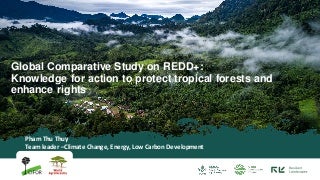Mountain forest ecosystems provide a wide range of direct and indirect contributions to the people who live in the mountains and surrounding areas. Occupying steep slopes at high elevation, these ecosystems provide services such as stabilizing slopes, regulating hydrological cycles, maintaining rich biodiversity and supporting the livelihoods of those who are diverse in culture but vulnerable to poverty and food security. This paper (i) reviews several tools for assessing the sociocultural, economic and ecological values of mountain forest ecosystem services, (ii) demonstrates case studies of tool applications from several countries namely, Bhutan, India, Indonesia, Iran and Nepal, and (iii) discusses assessment challenges that should be considered in the application of these tools.
In Bhutan, an application of benefit transfer showed that the average total value of forest ecosystem services was over USD 14.5 billion per year. In India, an application of stakeholder and household analyses indicated that a total of 29 different ecosystem services are available and sustain livelihoods of local communities near the Maguri Mottapung wetland. In Indonesia, an application of Q methodology identified anticipated benefits and concerns of forest watershed stakeholders related to certification applications for a payment for ecosystem services. In Iran, an application of the Integrated Valuation of Ecosystem Services and Trade-offs Tool showed that the regulation of ecosystem services has been declining in Hyrcanian forests despite the forests critical roles in the region. In Nepal, an application of a spatial analytical approach and participatory assessment techniques identified key mountain ecosystem services for community forests at the Charnawolti sub-watershed of Dolakha, and demonstrated forest restoration on degraded lands over the last two decades. Several challenges exist for the assessment of mountain forest ecosystem services and these must be reflected in assessment design. These challenges include the complexity of defining and classifying ecosystem services; limited availability of data on ecosystem services; uncertainties associated with climate change; complex relationships among services including trade-offs and synergies; and limitation of assessments to build successful payments for ecosystem services.











